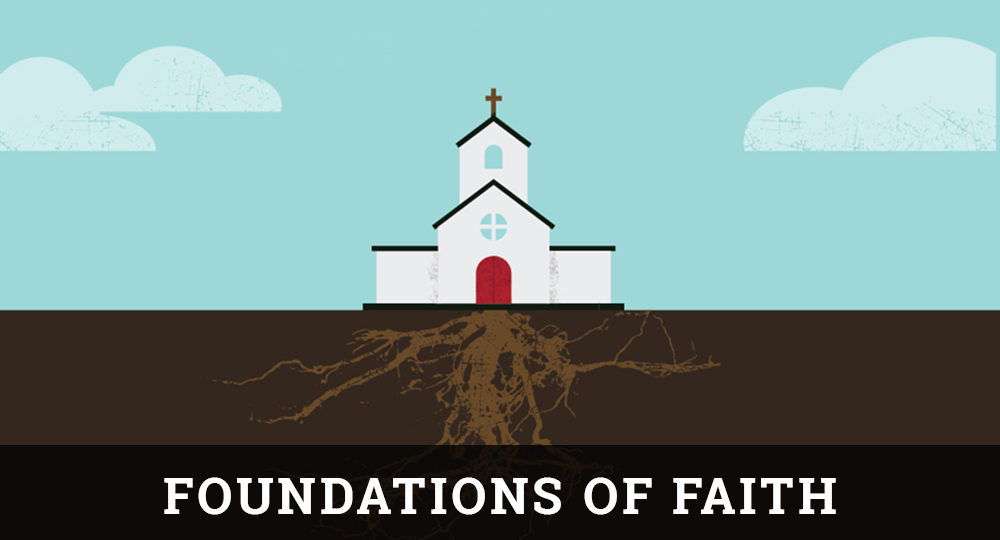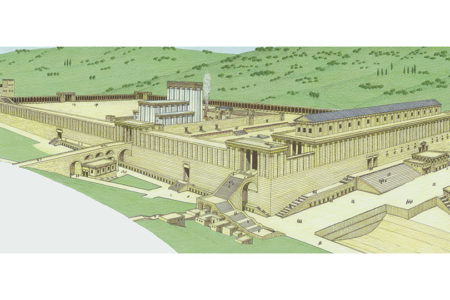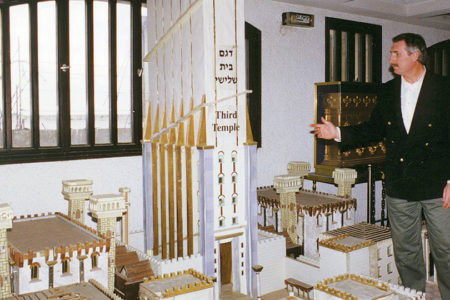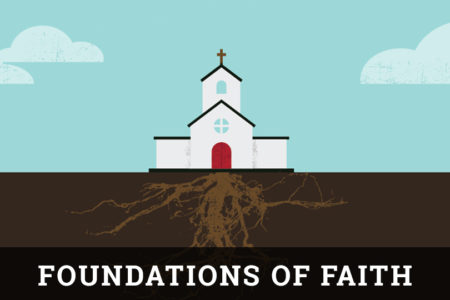The Incarnation of Jesus Christ Part One
Historically, some people and groups have denied that Christ came in human flesh. For example, some said that the Christ came temporarily upon an already existing man, Jesus of Nazareth. He came long enough to impart a secret body of knowledge to mankind then left the man Jesus before he went to the cross. Thus, it was not the Christ who died on the cross. Others claimed that the Christ appeared to have a human body, but it was only a nonphysical, phantom appearance. Both views denied that the Christ had a human body and a human nature of His own.
By contrast, the Scriptures teach that the eternal, preexistent, divine Christ came in human flesh at a specific time in history. As a result, He had His own human body and human nature.
Following are biblical evidences for Christ’s incarnation.
Christ Had Human Genealogies
Matthew 1:1–17 and Luke 3:23–38 give two different human genealogies for Jesus Christ. Matthew seems to trace his legal genealogy through His foster father Joseph and thereby presents the Christ’s legal right to the throne of His ancestor, David. It appears that Luke tracks His biological line of descent through His human mother Mary and thereby presents His biological right to David’s throne. Luke’s genealogy demonstrates that Jesus Christ has genuine human ancestors.
The Witness of the Apostle John
John 1:1, 14: After presenting Christ as the eternal Word, John declared, “And the Word was made flesh, and dwelt among us.” The word translated was made indicates entrance into a new condition, the act of becoming something that a person was not before (William F. Arndt and F. Wilbur Gingrich, A Greek-English Lexicon of the New Testament, p. 158). The word flesh refers to “a human being in contrast to God and other supernatural beings” (Ibid., p. 751). Thus, John was saying that through incarnation, the eternal Christ became something that He was not before—a human being.
The verb translated dwelt means “tabernacled” (Wilhelm Michaelis, “skenoo,” Theological Dictionary of the New Testament, vol. VII, p. 386). Just as eternal deity tabernacled in a tent among the Israelites in Old Testament times, so the incarnate Jesus Christ was eternal deity tabernacling in human flesh among human beings for more than thirty years.
John 19:18, 28, 33, 34, 36, 40: John recorded the fact that Jesus Christ had a physical human body that had bones, legs, and blood, was crucified, experienced thirst, was pierced with a spear, and was buried.
1 John 1:1: John used four verbs to declare what he and others had experienced with Christ during His earthly life. The first two express the fact that they had personally “heard” and “seen” Christ in a physical, human body. The perfect tense of these verbs indicates that this experience with the incarnate Christ left a lasting impression on them. “Often seeing and hearing together constitute the totality of sensual and spiritual perception which underlies eyewitness, personal experience, and individual certainty” (Wilhelm Michaelis, “horao,” Theological Dictionary of the New Testament, vol. V, p. 341).
John used two other verbs to emphasize that what he and others proclaimed concerning Christ’s incarnation was based on more than sight and sound. According to Westcott, the third verb (“have looked upon”) “expresses the calm, intent, continuous contemplation of an object which remains before the spectator” (Brooke Foss Westcott, The Epistles of St. John, p. 6). Through the fourth verb, “have handled,” John signified that he and others had actually felt the physical substance of Christ’s body (see Lk. 24:39). Together, these two verbs indicate “definite investigation by the observer” (Ibid.).
All four verbs stress the reliability of the eyewitness testimony of John and others that Christ had a physical, human body while on earth.
1 John 4:2–3: John opposed false prophets who, while under the influence of evil spirits, denied that Christ came in human flesh. He wrote, “every spirit that confesseth that Jesus Christ is come in the flesh is of God; And every spirit that confesseth not that Jesus Christ is come in the flesh is not of God; and this is that spirit of antichrist.” John indicated that those who deny Christ’s incarnation are influenced by the same evil spirit that will influence the future Antichrist.
The Witness of the Apostle Paul
1 Corinthians 15:3–4: In his definition of the gospel by which people are saved, Paul included the death, burial, and resurrection of Christ. The fact that Christ experienced physical death, burial in a tomb, and resurrection from the dead clearly indicates that He had a physical, human body.
Ephesians 2:13–15: Paul referred to “the blood of Christ” (v. 13) and “his flesh” (v. 15). Using the possessive expressions “of Christ” and “his,” Paul indicated that Christ has His own physical, human body. His body was neither a phantom appearance without physical substance nor another man’s body that Christ used temporarily.
Philippians 2:7–8: Paul presented three results of the divine Christ’s coming into the world. First, He “was made [lit, became] in the likeness of men.” The word translated men refers to human beings in contrast to animals, plants, angels, and God.
The word translated likeness “expresses with great accuracy the Apostle’s idea. Christ walked this earth in the real likeness of men. This was no mere phantom, no mere incomplete copy of humanity. And yet Paul feels that it did not express the whole of Christ’s nature” (H. A. A. Kennedy, The Epistle to the Philippians in The Expositor’s Greek Testament, vol. III, p. 438). Thus, although the incarnate Christ was truly a human being, He was also absolute deity. Johannes Schneider expressed it this way: “The divine figure entered history. This is only another way of saying what John says in 1:14: ‘The Word was made flesh’ ” (“homoioma,” Theological Dictionary of the New Testament, vol. V, p. 197).
Second, Paul stated that Christ was “being found in fashion as a man.” Johannes Schneider wrote that this “does not merely express the reality of His humanity. There is special stress on the fact that throughout His life, even to the death on the cross, Jesus was in the humanity demonstrated by His earthly form…The reference is to His whole nature and manner as man” (“schema,” Theological Dictionary of the New Testament, vol. VII, p. 956). Thus, He was truly human, both in nature and conduct. The word translated being found indicates that while Christ was on earth, other people recognized His humanity.
Third, Paul signified that Christ died by crucifixion. Spirit beings do not die; thus, Paul’s statement implied that Christ had a physical, human body.
Colossians 1:21–22: Paul declared that Christ reconciled sinful human beings to God “In the body of his flesh through death.” “Body of flesh” was a Hebrew expression for a physical body (F.F. Bruce, “Commentary on the Epistle to the Colossians” in Commentary on the Epistles to the Ephesians and Colossians, p. 212, footnote 145). Paul used that Hebraism to emphasize that Christ had a physical body consisting of His own flesh and that He experienced physical death.
Everett F. Harrison explained the reason for this emphasis:
There can be no doubt that the language is designed deliberately to counteract the false spiritualism advanced by the error that threatened the church. That false spiritualism maintained that no being possessed of a material body could possibly accomplish reconciliation to a deity who was pure spirit. The angels qualified at this point, and Jesus Christ did not. But the stubborn fact of history had to be emphasized. The Son of God had come in the flesh (Jn. 1:14), had lived His life on earth in the flesh (Heb. 5:7), and in the flesh had offered Himself on the cross as an offering for sin (Colossians, pp. 39–40).
Thus, Paul was stressing “the necessary bond between” Christ’s “incarnation and His atoning death” (Bruce, “Colossians,” p. 212).
1 Timothy 3:16: Paul stated that Christ “was manifest in the flesh.” The verb translated was manifest means “to become visible,” “to be revealed” (Rudolf Bultmann and Dieter Luhrmann, “phaneroo,” Theological Dictionary of the New Testament, vol. IX, p. 3). Thus, D. Edmond Hiebert wrote that Paul’s words concerning Christ are “a statement of the Incarnation and imply an unveiling of a previous existence” (First Timothy, p. 74). Paul was saying that Christ, who existed from eternity past as a heavenly spirit being, invisible to mortal mankind, became visible to human beings by means of incarnation on the earth.
The Witness of Hebrews
In Hebrews 2:14–17 the writer made three statements emphasizing Christ’s incarnation. First, “Forasmuch, then, as the children are partakers of flesh and blood, he also himself likewise took part of the same” (v. 14). The meaning and perfect tense of the verb translated are partakers emphasize the common sharing of the same flesh and blood nature by all human beings throughout the history of the human race.
The word translated likewise “is used in situations where no differentiation is intended, in the sense in just the same way” (Arndt and Gingrich, Greek-English Lexicon, p. 627).
The verb translated took part “expresses the unique fact of the Incarnation as a voluntary acceptance of humanity” (Westcott, Hebrews, p. 52).
Thus, before Christ’s incarnation, the flesh and blood nature common to mankind was not part of His eternal being. But “at a fixed point in time, by His own choice, ‘he also himself in like manner partook of the same’ and so began to share fully the nature of those whom He willed to redeem” (F.F. Bruce, Commentary on the Epistle to the Hebrews, p. 41).
Second, “For verily he took not on him the nature of angels, but he took on him the seed of Abraham” (v. 16). The verbs translated took on mean “to bring into one’s sphere” (Gerhard Delling, “epilambano,” Theological Dictionary of the New Testament, vol. IV, p. 9). Christ did not take into His being the nature of angels. Instead, since God had promised blessing for all mankind through a physical human descendant of Abraham (Gen. 22:18), Christ took into His being a complete human nature by becoming a physical, human descendant of Abraham in order to help all mankind (Acts 3:25–26; Gal. 3:16).
Third, “Wherefore, in all things it behooved him to be made like his brethren, that he might be a merciful and faithful high priest in things pertaining to God” (v. 17). The word translated behooved “speaks of a more inward obligation and necessity incumbent on Christ the high priest” (Friedrich Hauck, “homoioo,” Theological Dictionary of the New Testament, vol. V. p. 563). Thus, the writer was indicating that “The nature of the work Jesus came to accomplish demanded the Incarnation” (Leon Morris, “Hebrews” in The Expositor’s Bible Commentary, vol. 12, p. 29).
The next article in this series will examine more facts about Christ’s incarnation.








Dr. Renald Showers will be missed. His writings have ministered to me, a pastor, for 40 years.